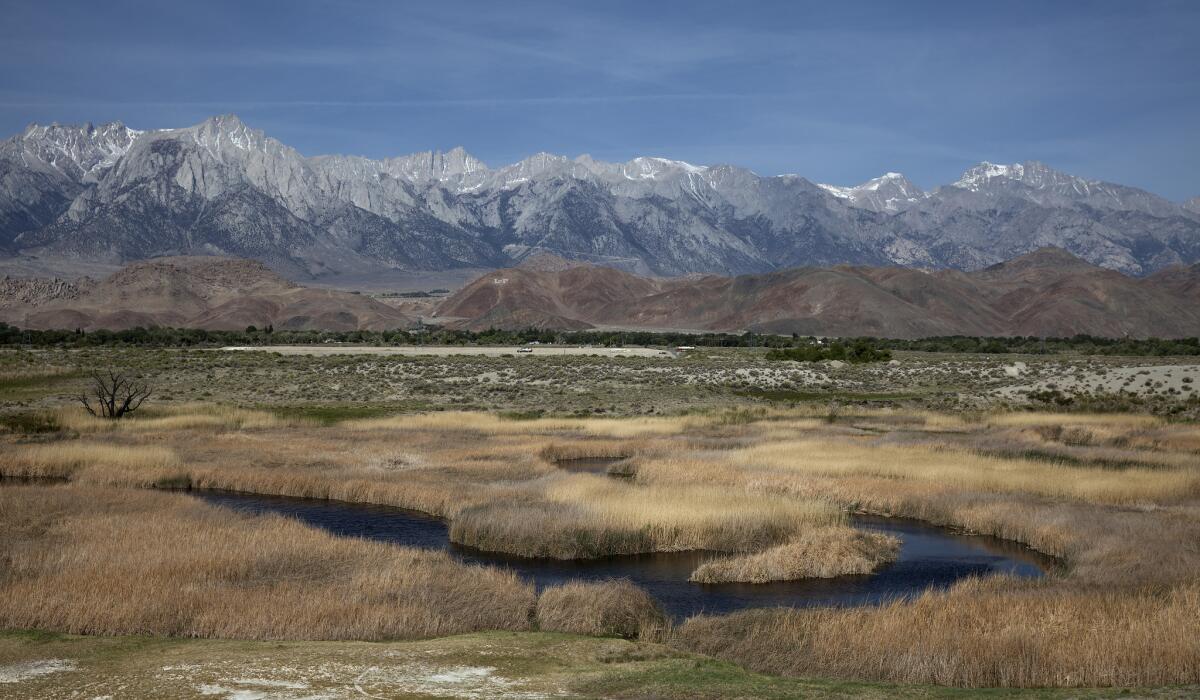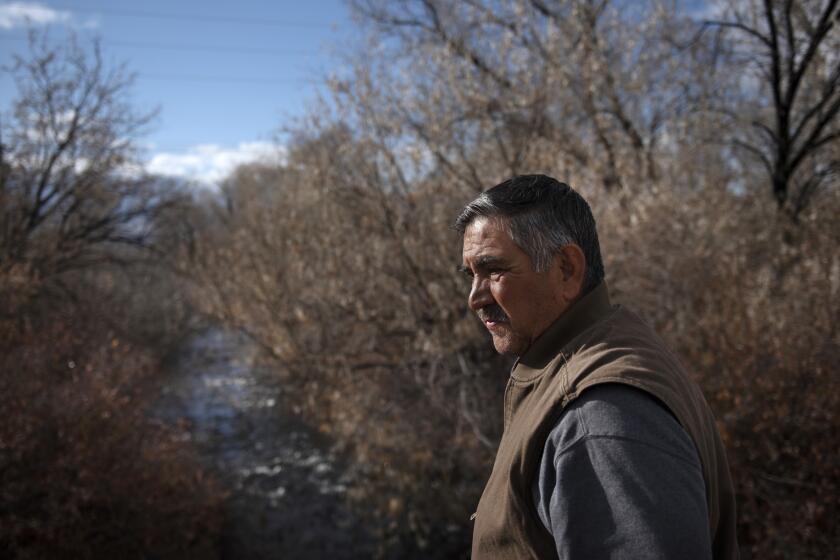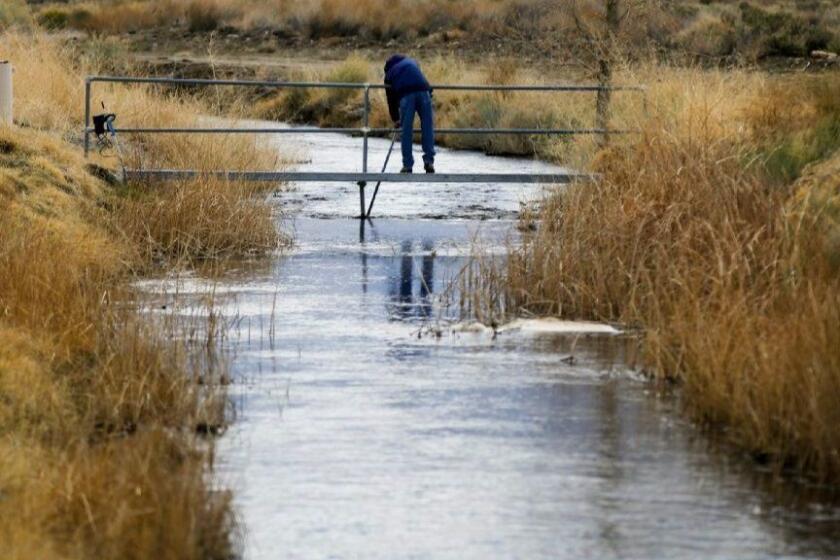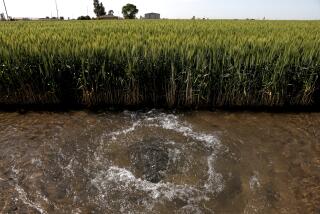California will be hit hard as Trump administration weakens clean water protections

Defying environmentalists and public health advocates, the Trump administration on Thursday announced the replacement of Obama-era water protections with a significantly weaker set of regulations that lifts limits on how much pollution can be dumped into small streams and wetlands.
The changes to the Clean Water Act’s protections are expected to hit California and other Western states especially hard.
Federal data suggest 81% of streams in the Southwest would lose long-held protections, including tributaries to major waterways that millions of people rely on for drinking water.
Andrew Wheeler, the administrator of the Environmental Protection Agency, defended the new rule when he announced it at a conference in Las Vegas of the National Assn. of Home Builders — one of the industry groups that pushed for loosening clean water rules.
The administration’s rule, called the Navigable Waters Protection Rule, “provides certainty, predictability that will save Americans time and money while accelerating infrastructure projects and economic development,” Wheeler said.
He rejected federal data that show a majority of the nation’s wetlands and many streams will lose protection, and he dismissed efforts to quantify the effect as “too inaccurate and speculative to be meaningful.”
Environmentalists criticized the new rule as the latest in a series of actions by the Trump administration to prioritize polluting industries over people or the environment.
“This rule is the culmination of an insider campaign to gut bipartisan protections that have safeguarded the nation’s water for decades, and will endanger the health and environment of families and communities across the entire country,” said Blan Holman, a lawyer for the Southern Environmental Law Center, a nonprofit public interest law firm based in Charlottesville, Va.
Under the new rule, polluters will no longer need a permit to release contaminated water into so-called ephemeral streams — sometimes called washes or arroyos — where water flows only occasionally because of rainstorms and snowmelt. Wetlands that aren’t immediately adjacent to protected waters will also lose federal safeguards.
Both of these features are common in Western states, and scientists say they are likely to become more so as warming temperatures make a dry climate drier.
Clean water regulations are “essentially about how you provide drinking water. How you store flood waters. How you protect ecosystems that thrive in certain areas that we all need and want,” said Gina McCarthy, president of the nonpartisan Natural Resources Defense Council and a former EPA administrator under President Obama, in an interview shortly before the rule’s unveiling. “This is a big-deal issue, and I don’t think it was thoroughly looked at as it should have.”
In a rebuke to the Trump administration, the EPA’s own advisory board criticized the agency’s plans.
“These changes are proposed without a fully supportable scientific basis, while potentially introducing substantial new risks to human and environmental health,” the board wrote in its commentary.
In California, 2 out of 3 of the state’s freshwater streams could lose federal protection.
Yet the state is better positioned than others to weather the changes. Waters that lose protection under the Trump rule will still be covered under California law. And state regulators have strengthened protections for wetlands and streams in anticipation of the federal rollback.
Most states don’t have nearly enough money or environmental expertise to fill the void created by vastly scaled-down federal regulations.
In New Mexico, environmental regulators estimate that the new rule could leave 96% of the state’s waterways and wetlands unprotected from pollution, including waters that flow into the iconic Rio Grande. The state does not have its own regulations to replace those lost in the rollback, making it particularly vulnerable.
The Trump administration’s plans to weaken clean water protections would lift limits on how much pollution can be dumped into small streams and wetlands, a move that could threaten arid Western states. In New Mexico, the Clean Water Act will essentially cease to exist.
The new rule is likely to attract legal challenges. By limiting federal jurisdiction over small streams and wetlands, it not only unravels the Obama administration’s enhanced protections — it strips away safeguards put in place in the 1990s under President George H.W. Bush.
Plans to narrow the Clean Water Act’s reach have been in the works since the earliest days of the Trump administration when the president issued an order directing the rollback of the 2015 rule, known as Waters of the United States, enacted by his predecessor.
That rule expanded the reach of federal regulations and further restricted farmers’ ability to use pesticides and fertilizers on land that could drain into wetlands and streams.
Real estate developers, farmers, ranchers and others fought for years against the Obama-era regulations.
Home builders complained that the rules needlessly limited where they could build. Farmers complained that the rules amounted to illegal infringements on their property rights that required them to get costly permits in order to dig a ditch. Mining and oil and gas companies joined the attack.
Environmental advocates countered that the federal government had an obligation to protect entire ecosystems, including ephemeral waters, to prevent downstream pollution.
Trump’s EPA and the Army Corps of Engineers repealed the Obama-era expansions last year at the behest of industry groups. The move met immediate legal resistance from environmentalists and several states, including California, which sued in federal court to have the regulations reinstated.
The replacement rule is scheduled to take effect 60 days after it is published in the Federal Register although expected lawsuits could delay its implementation.
In a statement, California Atty. Gen. Xavier Becerra called the new rule “an unlawful assault on the Clean Water Act.” He added, “We’re prepared to take action.”
Earlier this month, Trump touted the rollback as a win for farmers.
Speaking to an audience of farmers and ranchers on Sunday at the American Farm Bureau Federation conference in Austin, Texas, Trump repeated an inaccurate claim that regulations enacted under Obama extended the Clean Water Act’s protections to puddles. It did not.
“Sometimes, you’d have a puddle — a little puddle. And they’d consider that a lake,” he said. “As long as I’m president, government will never micromanage America’s farmers.”
The rollback is the latest step in a decades-long battle over the federal government’s authority to impose environmental protections on rivers, streams, wetlands and irrigation ditches.
The Trump administration is poised to roll back Clean Water Act protections on millions of acres of waterways and wetlands, including up to two-thirds of California’s inland streams, following through on a promise to agriculture interests and real estate developers to rewrite an Obama-era rule limiting pollution.
Agricultural and real estate industry groups — and the mainly conservative lawmakers who represent them — have fought to restrict the government’s reach to major water bodies that are considered “navigable.”
Left-leaning states and environmentalist have pushed back, arguing that it’s impossible to protect vital waterways without also protecting the waters that feed into them.
When the Supreme Court took up the question in 2006, it only added to the controversy. In Rapanos vs. United States, a case that centered on whether a Michigan landowner could develop a piece of property that was designated as a wetland, the court split three ways.
Justice Antonin Scalia, joined by three other justices, wrote that the law only protected wetlands connected to a steadily flowing stream.
But in his deciding opinion, former Justice Anthony M. Kennedy devised his own test to determine which water bodies warranted Clean Water Act protections, writing that the law protected wetlands as long as there was a “significant nexus” with navigable waters. This appeared to provide continued federal control over most wetlands.
The confusion created by the court’s decisions led the Obama administration to attempt to clarify the regulations in the Waters of the United States rule.
More to Read
Get the L.A. Times Politics newsletter
Deeply reported insights into legislation, politics and policy from Sacramento, Washington and beyond. In your inbox three times per week.
You may occasionally receive promotional content from the Los Angeles Times.













